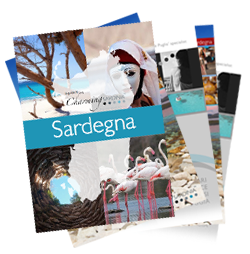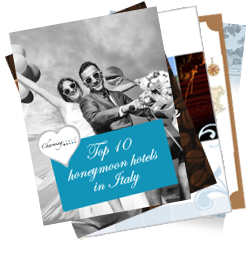Travel Guides to Sardinia
Sardinia
In Italy you wont find what you find in Sardinia and in Sardinia you wont find what you find in Italy this is what the natural scientist and Jesuit monk Francesco Cetti wrote while travelling trough Sardinia at the end of the 18th century .
Sardinian people place a great importance on traditions: this is because they have been struggling for centuries to protect themselves, their identities and their territories from the incursions of conquerors. The history of Sardinia tells us how its people have always fought against the invasions of the main empires in the Mediterranean area. Despite being on an island, Sardinians did not use to spend much of their lives on the coasts, as these were often occupied by invaders; they would rather build cities and work in the countryside. In the inner part of the island they developed an economy based on animal breeding (especially sheep) and agriculture.
Sardinia has a lot to offer! Main tourist attractions include the beautiful beaches, close to many Sardinia Hotels, all around the 1.850 km coast line, as well as the crystal clear sea water, which is one of the least polluted in the Mediterranean sea . Many archaeological sites represent historical proves of the presence on the island the of the first prehistoric villages as well as of the geographical and strategic importance of Sardinia inside the basin of the Mediterranean sea.
Among the interesting archaeological finds in Sardinia, we certainly have to mention the Domus de Janas ancient tombs carved in the rocks and the Nuraghes, which are the most astonishing buildings of the human ancient history, after the pyramids, and the most peculiar of Sardinian history. Giant Tombs, sacred wells, Phoenician-Punic-Roman trade centres and Christian churches, the wealth of the medieval period and the remains of the Spanish domination are also to be found on the island.
Old traditions, wild and untouched nature, breath-taking landscapes co-exist in Sardinia and make it so unique; let yourself be enchanted by this charming island! It is worth visiting the inner part of the island, with its beautiful countryside and landscapes, enriched with olive trees and granite rocks, romantic tiny little villages on the mountains.
 | 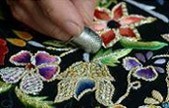 | 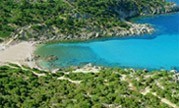 |
Geographic Information
Sardinia is located right in the middle of the Mediterranean Sea. It has a surface of about 24,090 km2 and is therefore the second biggest island in Italy and in the whole Mediterranean Sea. It is about 3 times bigger than Corsica and 7 times bigger than Majorca. The rhomboidal shape of the island explains the name that it was given by the Greeks: Ichnusa (Icnos = trace, footprint) and Sandaliotis (sandal). The Roman name Sardinae is supposed to come from the legendary Sardus, son of Hercules, who is believed to have brought a group of Libyans to the island.
Sardinia is not densely populated; despite its large surface, the inhabitants are only 1.7 million and a good 17% of the surface is used for sheep breeding and agriculture: this figure is double that of the European average, and this is because in Sardinia the number of sheep almost doubles that of humans!
The surface of the island is mostly hilly and the highest massif is the Supramonte of the Gennargentu, right in the middle of the island. The highest summit is Punta La Marmora with its 1.834 m height. The steep cliffs of the hills end in the sea on the Western and Eastern coast, the fertile plains of the West or the fjords in the North are typical images of this very peculiar island.
The small rivers reach their maximum water capacity in spring, after the melting of the snow and the end of the wet season. After short flooding periods most of them dry out in summer. The biggest river is the Tirso. Its sources are in the mountains of Buddus and its course ends in the Gulf of Oristano. The only navigable river in Sardinia is the Temo, which runs along Bosa. When the river deltas were dried out to extinguish the marshes dominated by malaria flies (which caused the transmission of malaria until the fifties), the water was blocked and accumulated at the sources of many rivers. In this way small lakes were created like the Lago Omodeo (not far from the Tirso), the Lago Coghinas etc. In these lakes, eels, trout and mullets can be found.
Sheep breeding and mineral stone processing have a long tradition in Sardinia. Coal, iron, lead, zinc, copper and silver have been mined for several years. Lead and zinc mines were built as well as petrol refineries and chemical and textile factories. In the region of Gallura, in the North-East of Sardinia, several granite caves are to be found; the production and manufacturing of cork plays also an important role in the economy of this area. Another typical product of Sardinia is sea salt, which has always been extracted from the Salinas of Cagliari and traded since ancient times. Last but not least is the wine and olive-oil production.
Sardinia is covered by about 64.000 acres of forests, most of which are of cork oaks, and several flat areas on which corn is cultivated.
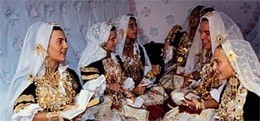 |
History
In order to better understand Sardinia, it is necessary to briefly introduce its history.
The origins of the island date back to 600 million years ago. The island has been located almost in the same position in the sea for over 65 million years now. Therefore, Sardinia is, from the geological point of view, one of the oldest territories of Europe, with little if none seismic risk at all. It remained inhabited for about 10 8.000 years, due to its state of island, surrounded by the Mediterranean and so rather difficult to reach without any proper ships.
Prehistorically, Sardinian people used to live in villages of huts or pile-dwellings, in caves along the lagoons or in megalithic fortresses - the so called Nuraghes. Their religion was based on the veneration of symbols representing life and fertility. They worshipped the Mother Goddess and believed in the cult of death and used to bury their dead family members in the Domus de Janas (tombs of the fairies), which were carved in the rocks.
From 2.200 to 1.800 B.C. other peoples arrived from Eastern Europe to Sardinia, and started building cone shaped buildings in megalithic style, i.e. with big stone blocks - the so called Nuraghes - on the top of the hills or on the bottom of the valleys; this location was chosen to help members of local tribes protect themselves from attacks by members of other tribes and also to have a shelter to protect them against bad weather conditions. The Nuraghe civilisation has left on the island about 7000 ruins (of Nuraghe buildings); the most important is the one of Barumini, whose name Su Nuraxi (The Nuraghe) underlines that its consider as The Nuraghe par excellence.The Nuraghe people believed in the cult of water (this is why we have found several sacred wells pozzo sacro) and venerated their ancestors buried in the giant tombs by offering them bronze statues.
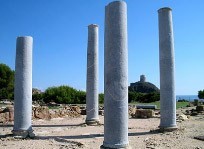 | 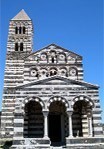 |  |


